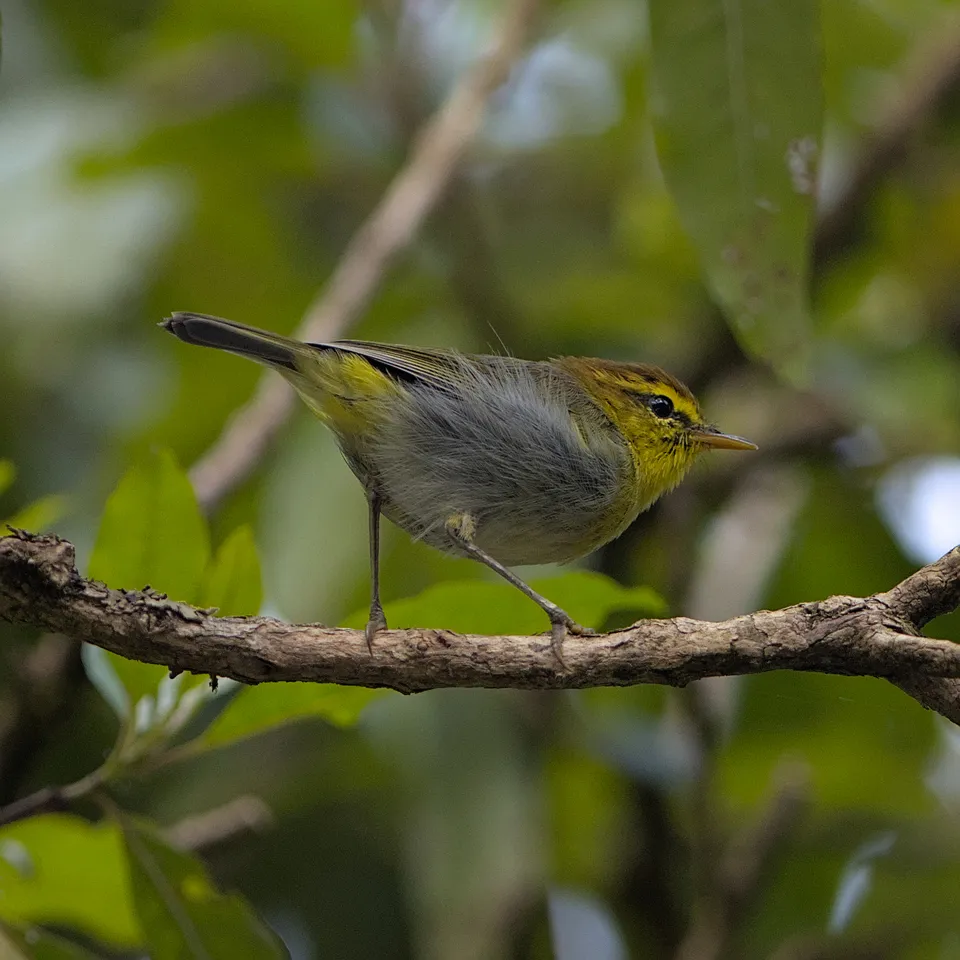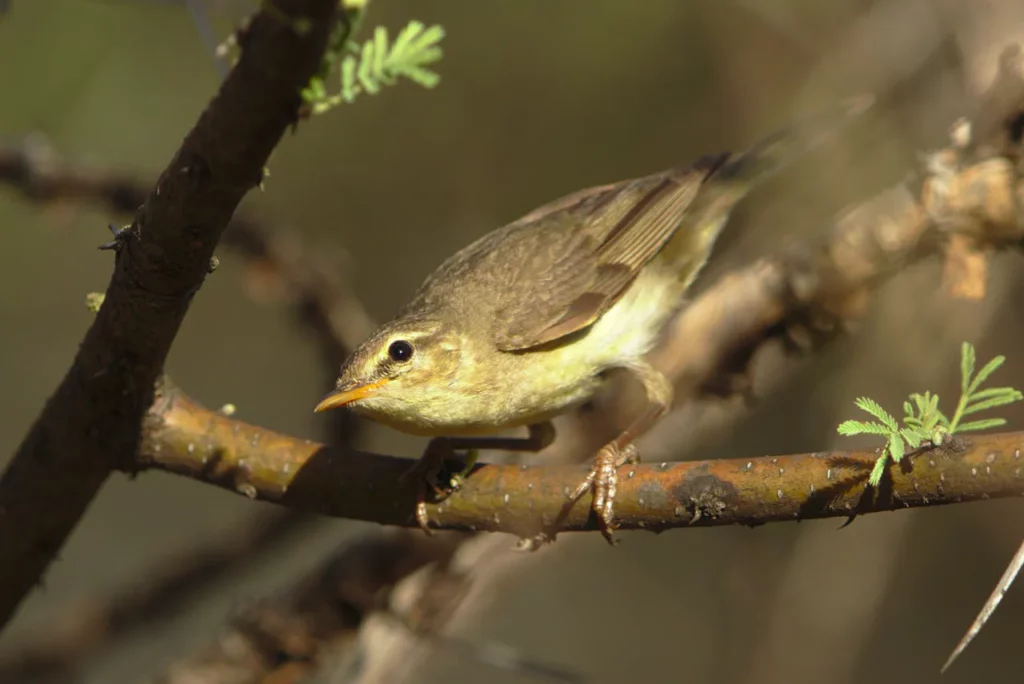A leaf warbler fly-by
Back in June, if I was writing this I would have said that two species of leaf warblers were known from South Africa. However, this changed in July when a single wood warbler (Phylloscopus sibilatrix) was found at the lovely Sefapane Lodge in Phalaborwa, not far from where I live in Hoedspruit. This bird caused quite a stir in the South African bird community and it stuck around for several weeks. The wood warbler is a widespread species, and breeds throughout northern and temperate Europe, and just into the southern Ural Mountains.
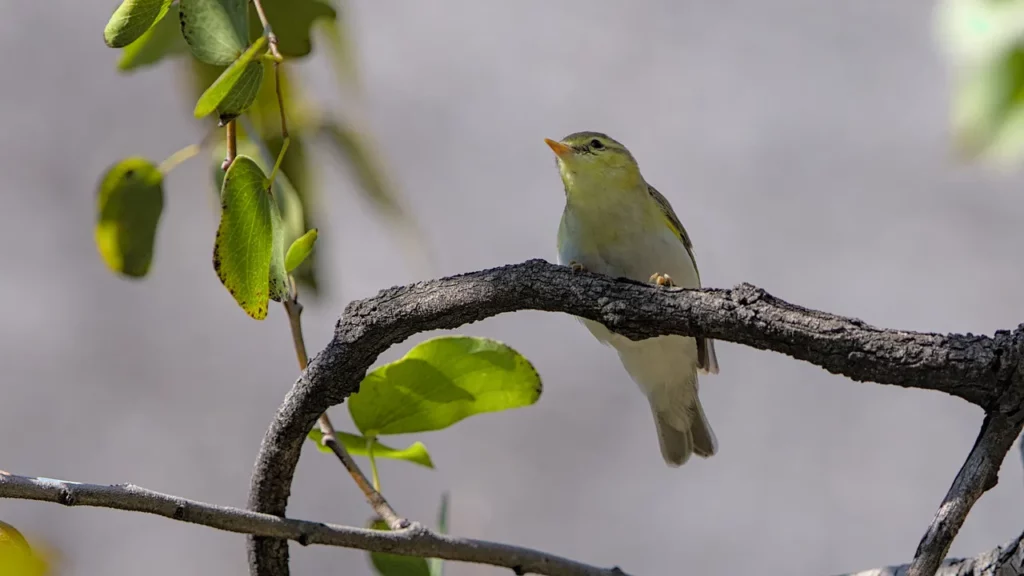
I first went to see it at the end of its second week, and went back again at the end of the fourth week. At that time I was able to spend several hours following it around. It is a very active little bird, constantly on the move and often behind leaves, twigs and branches. It hops and jumps along the branches of the most common trees, Natal fever tree and mopani, often making short flights from one branch to another. All this moving and not holding still makes it difficult to photograph, a fact that is not helped by there being only one of them in the country.
The whole population of wood warblers migrates to Africa, and over-winters in the tropical part of the Continent. How one ended up in South Africa at a time when it should have headed north to Europe is not known, but one can imagine that this one got confused somehow and went south instead of north. This is actually a known phenomenon in birds, and it is referred to as reverse migration or misorientation. This is a phenomenon in bird migration where an individual bird flies in the opposite direction of what is typical of its species during the spring or autumn migration. Reverse migration can lead to birds such as the wood warbler showing up thousands of kilometres from where they ‘should be’, such as in South Africa instead of Europe.
How this happens for small passerine birds is a mystery, since their migration route is genetically programmed, and young birds can innately navigate to their wintering area and back again. In some cases, this misorientation seems to be due to a genetic change, such as mutation in the area of the genome that determines migration direction. In some cases offspring from these lost birds and subsequent generations may continue to follow the new, genetically programmed migration route and this could contribute to speciation if enough birds do it and survive to grow the alternative population. Whatever the reason, reverse migration is common in birds, and this instance of it created a lifer for myself, and for lots of other South African birders.
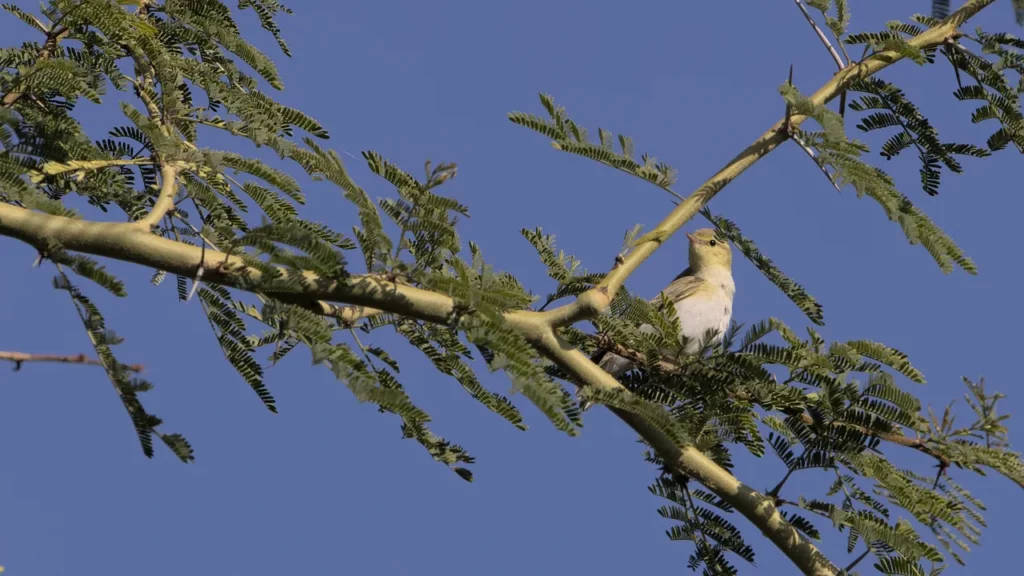
Some wood warblers make use of an interesting mating strategy on their European mating grounds: they practice polyterritorial polygyny. Males of this species are territorial, and establish territories in close proximity to other males, presumably to attract more females to the area and increase the likelihood of mating. The polyterritorial polygyny comes in when an already paired male establishes a secondary territory, and then finds a second female with which to mate.
The leaf warblers form the only genus belonging to the family Phylloscopidae, introduced in 2006, prior to which it was placed in the Old World warbler family Sylviidae that has undergone much revision of the past couple of decades. The Phylloscopidae contains 81 species of tree-loving warblers that occur primarily in Eurasia and Africa, with one species making it as far east as Alaska. There used to be another genus in this family, Seicercus containing around 11 species, but Seicercus was merged into Phylloscopus leaving only one genus in the family. Members of the Phylloscopidae are all small birds, with adult body masses from 3.5g to 17g.
The genus Phylloscopus was introduced by the German zoologist Friedrich Boie in 1826 to accommodate a single species, the willow warbler (Phylloscopus trochilus), which also happens to occur in our area. The well known common chiffchaff (Phylloscopus collybita) is also a leaf warbler.
Willow warblers are common summer visitors throughout South Africa, their abundance probably dependent on the rains across the southern African region. They are what are referred to as Palearctic migrants, birds that migrate south from the biogeographic region that includes Europe, the northwest coast of Africa, and Asia north of the Himalaya Mountains. There are many Palearctic migrants that over-winter in our area during our summer, and they do not breed here but rather in the Northern Hemisphere during their summer.
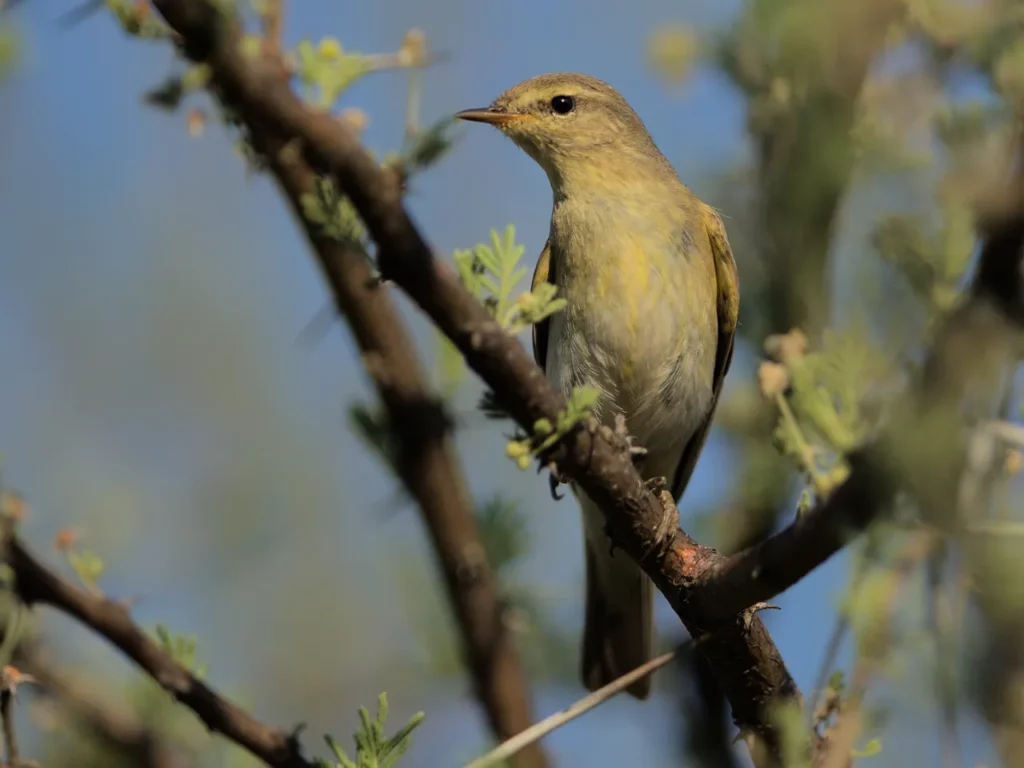
Willow warblers feed on insects, which they glean from leaves and twigs of trees, but they can also catch insects in flight. Males and females have differences in wing shape and length, and this may influence their feeding tendencies, with females tending to do more hovering for ‘fly-catching’ than males, although this depends on habitat and food availability.
Most willow warblers depart our area in March, and arrive back in their breeding grounds during April or May, probably those over-wintering in northern parts of Africa arrive earlier. Once they arrive in their breeding grounds, they establish territories and begin trying to attract females. Adults of both sexes seem to return to their former territories, but yearling birds are less prone to do so. This is referred to as philopatry – the tendency of an organism to stay in, or habitually return to, a particular area.
Willow warblers, at least in some populations, show higher numbers of females than males. In these circumstances, males become polygnous (mate with more than one female), usually having two and sometimes three female partners. Like the wood warblers, they seem to retain a primary and secondary nests.

It seems that females may be polyandrous in some cases, or that brood parasitism occurs where a female will deposit an egg in the nest of another female. Diego Gil and co-authors studied this in Scotland, and found that 23.5% of young in the study population were not related to the social father, and that 47% of nests contained at least one extra-pair young.
Intra-species brood parasitism was studied in this species in western Russia by Maria Matantseva and colleagues and published in Biology Bulletin late last year. Using genetic analysis they measured the relatedness of chicks to both of the social parents and found two cases where chicks were in nests that were not tended by their biological parents. In each case, the nest contained 6 eggs, one of which had been laid by a female acting as a brood parasite. Whether the female had a nest of her own was not known. It goes to show that brood parasitism, may be more common than we realise since the only way to reliably know is to conduct genetic studies.
The other leaf warbler found in our area is the yellow-throated woodland warbler (Phylloscopus ruficapilla). Unlike the other two, this species is restricted to southern and eastern Africa, from Kenya down to South Africa. It’s habitat is typically described as, subtropical or tropical dry forest and subtropical or tropical moist lowland forest. In the area where I live, it is found almost exclusively in the Afromontane forest remnants that cloak the eastern slopes of the Northern Drakensberg. It is common in the forests above the Blyde River Canyon, and especially so in the thick forest areas of Mariepskop.
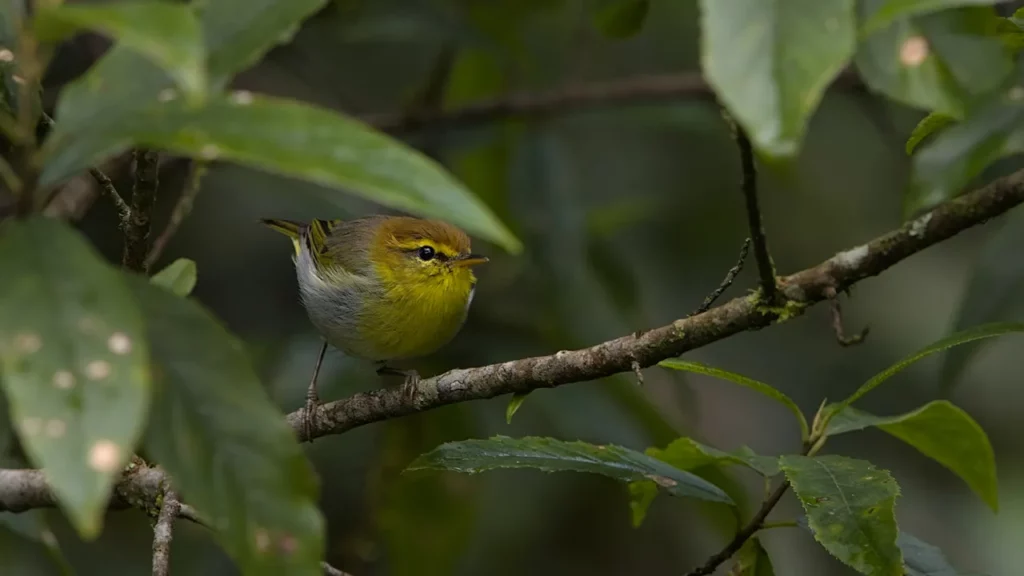
Interestingly, this species nests on or close to the ground, building a domed nest with a side entrance, usually on a steeply sloping, moss-covered bank. In contrast, their feeding is mostly in mid to top canopy where they are more often heard than seen. For such a common bird, there is very little research done on it, at least when comparing it to the amount of research done on leaf warblers in Europe.
The leaf warblers shared a common ancestor with other warblers in the Neogene period, around 17 million years ago according to data used in ONEZOOM (http://www.onezoom.org/) and diversified from around 14 million years ago up to the present. We are fortunate to have two species that occur commonly, and now our illustrious, lost visitor that is still around as I write this in August.
